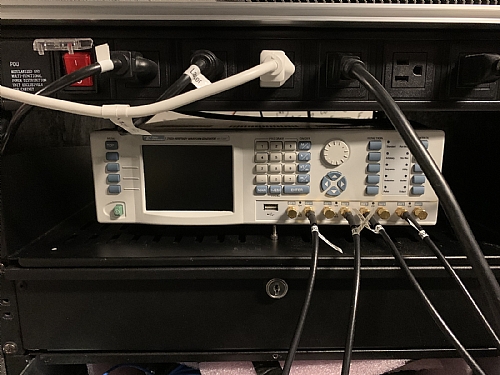Entangled qubits can also be used for secure communications. When two qubits are entangled, the measurement of the first qubit creates the opposite condition in the other, regardless of their positions in time and space - the qubits continue to affect each other no matter the distance in miles or even in time. This is what Einstein referred to as ‘spooky action at a distance.’ In collaboration with physicists Podolsky and Rosen, he wrote what came to be known as the Einstein Podolsky Rosen (‘EPR’) Paradox. In this paper they argued that the phenomenon of entanglement was a ‘violation of locality’, as locality is generally understood, i.e. that in order for A to affect B, A must be physically touching B.
Bell's theorem in 1964 disproved the locality theory, and in 1972 physicist Charles Bennett el al. published the concept of Quantum Teleportation.
Quantum teleportation in concept means you can transfer the state of local electrons onto the state of distant electrons. Given that any object consists of groups of atoms, with their associated electron behaviors and states, teleportation means you could transfer these states and behaviors onto a bunch of atoms elsewhere creating an exact copy of the original object somewhere else.
Given that the laws of quantum physics do not allow cloning, the states of the atoms that makeup the original object would be destroyed. Fortunately, we need not yet confront the ethics and paradoxes of such a scenario, as the state of the art with teleportation so far is limited to the transportation of a few photon states via a laser beam.
The actual teleportation protocol involves creating an entangled quantum state and sharing its two parts between the source and destination locations. We create two entangled beams of photons by shining a laser into a specific type of crystal using a process called Spontaneous Parametric Down Conversion to split the laser beam. For example, the laser beam would consist of many photons at 400nm, after the photons enter the crystal, they’re split into two streams of photons, each with a wavelength of 800nm, i.e. half the frequency of the original beam.
By adjusting the laser and crystal polarization, we can put the photons into a state of superposition and entanglement. The sender then gets one beam of photons, and the recipient gets the other beam of entangled photons. The sender also has a photon with a spin that represents the bit that needs to be transmitted. This is entangled with the shared photon beam, creating two qubits with four possible states.

IQC's Quantum Photonics Lab utilizing a Tabor AWG
The key now is to make the measurement, then successfully transmit a value from source to the destination. The sender first performs a measurement that partially collapses the superposition and determines which of the four states the system is in. At this point the receiver is left with four possible states, but out of the four does not know the valid state. The sender must then tell the receiver which of the four states is the valid state - this is analogous to sharing a key. (Note that this part is not a quantum operation, but something more ‘classical’ such as a data exchange through a telephone call, email or some other agreed internet transfer protocol.) In the final part of the operation, the receiver passes the shared qubit through quantum logic gates. The value of the key determines the type of gate. Once the correct gate is applied, the photon will assume the state of the bit that was transmitted, and quantum teleportation is achieved.
IQC's University of Waterloo - Space-based quantum secured communication prototype demonstration
Tabor Arbitrary Waveform generators are used in Quantum Communications to control the phase and intensity of the Laser. The ability to stream continuous waveforms on multiple simultaneous channels solves the problem of multiple high rate control signals to the Laser. This is a unique feature of the latest generation of tabor instrumentation.
Real time pulse calculation and downloading from MATLAB to the Proteus AWG
For more information on Tabors Arbitrary waveform generators or to schedule a demo please contact us.